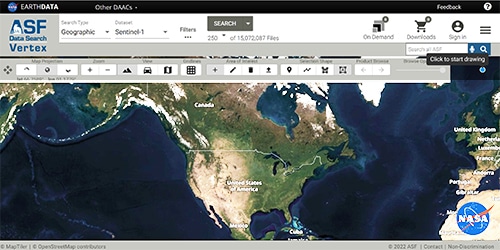Helpful information for understanding and working with SAR data
What is SAR?
SAR: The Power Tool of Remote Sensing Synthetic aperture radar (SAR), used to create the majority of the imagery available in the ASF archive, is
How do I interpret SAR images?
Interpretation of synthetic aperture radar (SAR) images is not always straightforward, in part because of the non-intuitive, side-looking geometry. Here are some general rules of
Basic SAR Concepts and Terminology
Also see Fundamentals of SAR Media Resources How Does it Work? A synthetic aperture radar (SAR) is an active sensor that first transmits microwave signals
Fundamentals of SAR – Media Resources
Print and video guides to the basics of Synthetic Aperture Radar Printed Material and Websites on the fundamentals of SAR ASF SAR User’s Guide Published in
Vertex Help
How to search for ASF data using the powerful Vertex Data Search application.



